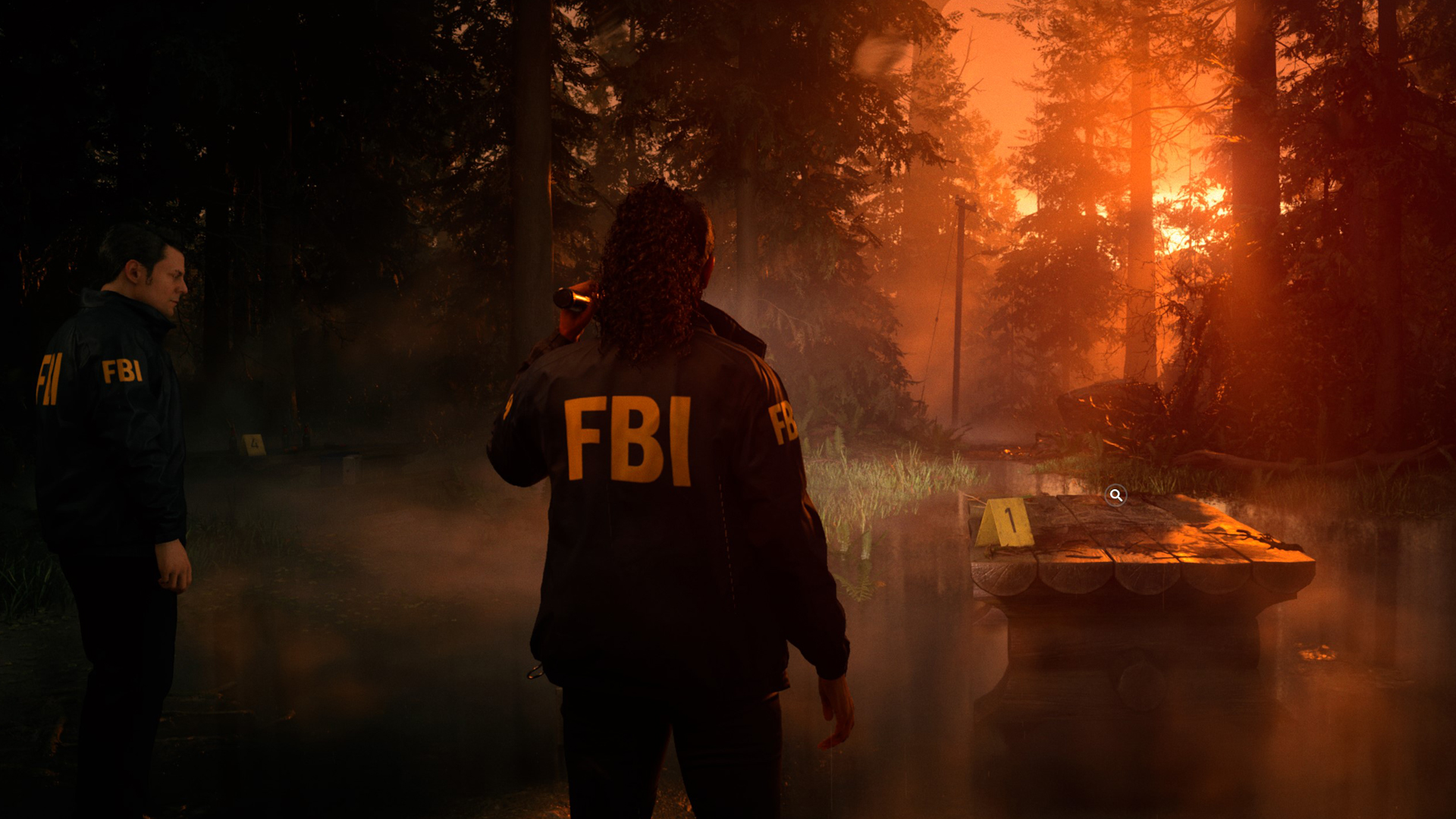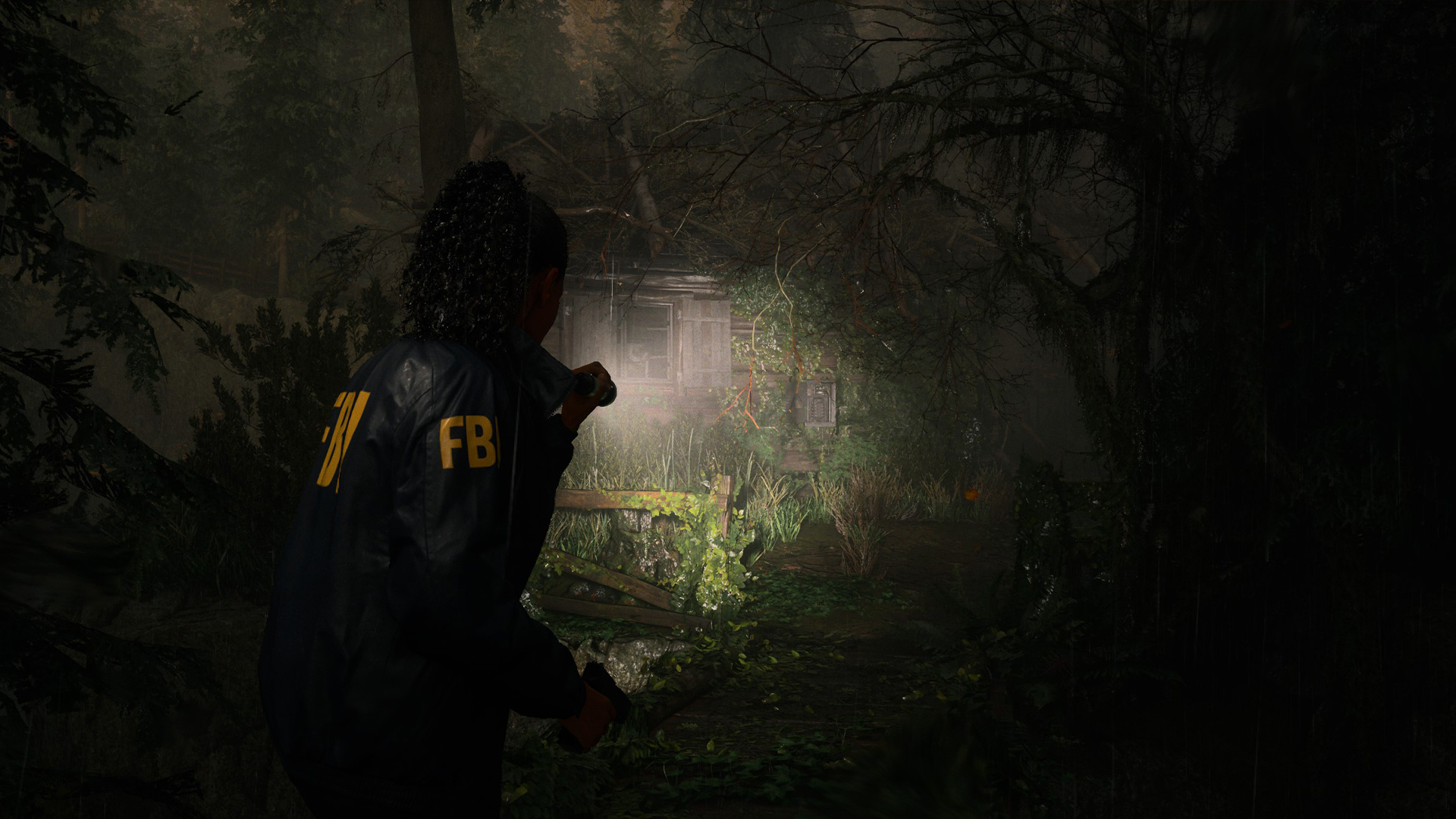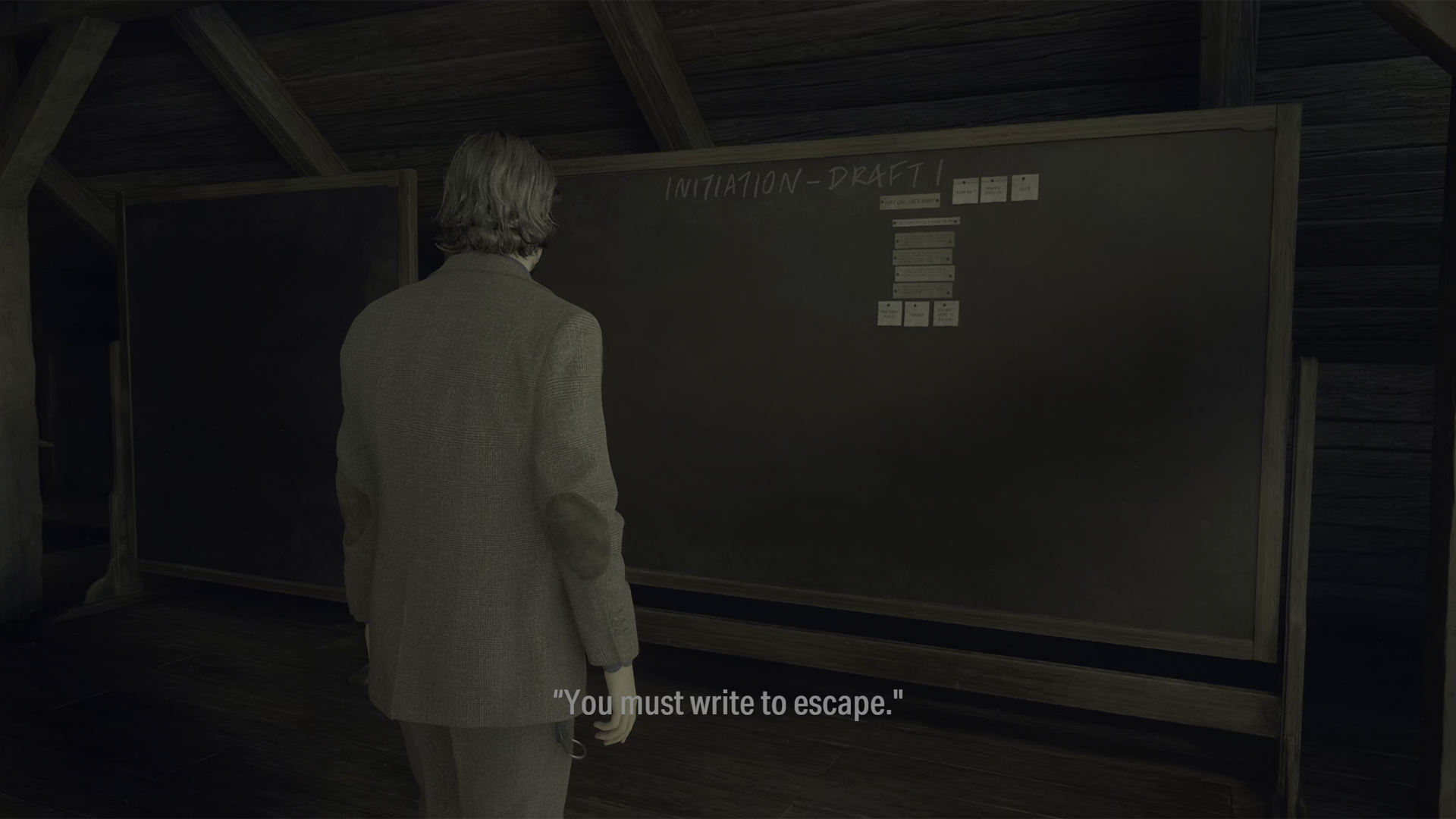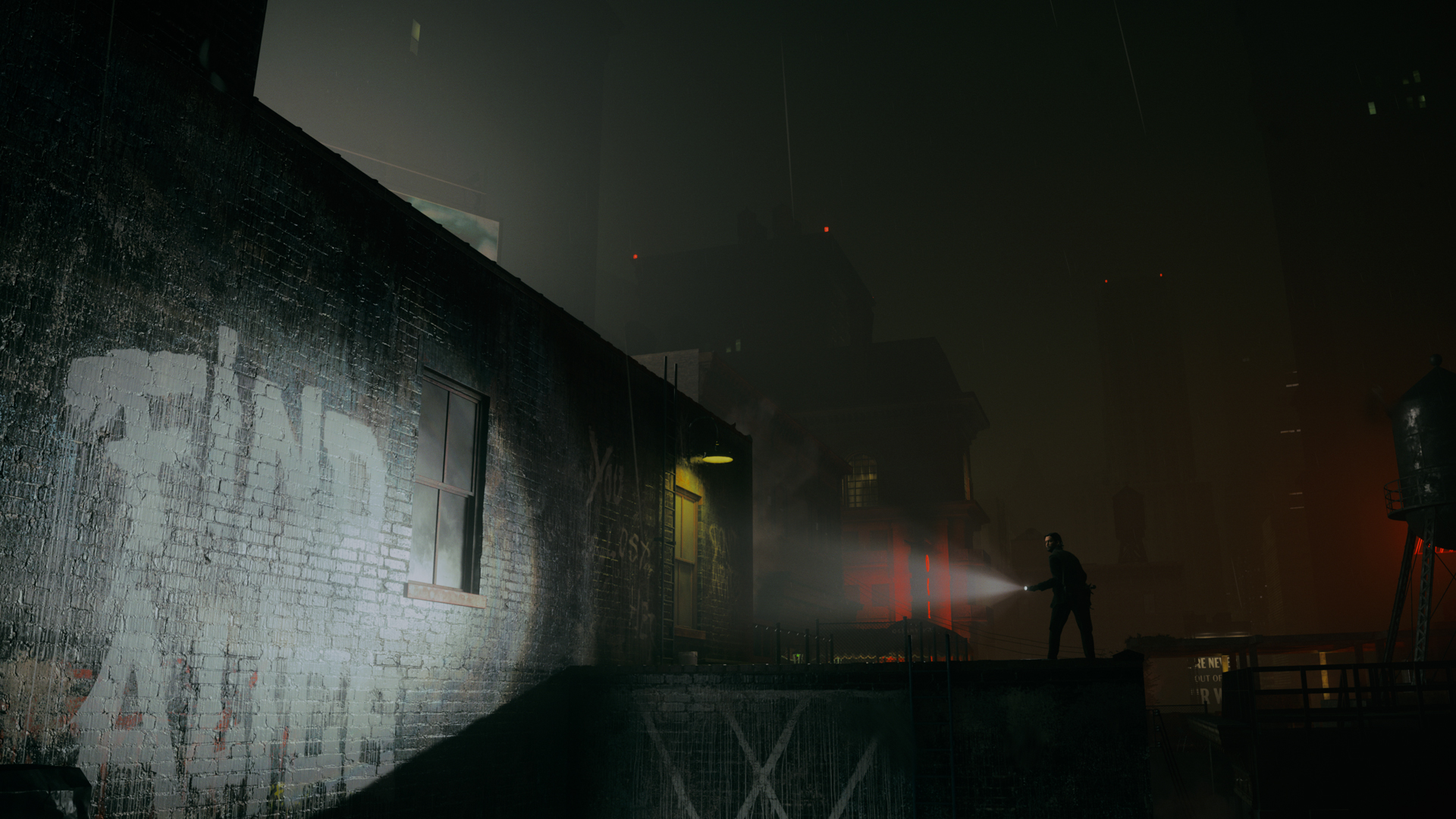GamesRadar+ Verdict
Alan Wake 2 is a strange, imaginative, and truly ambitious sequel that never fails to upend your expectations. While some of the bigger concepts presented by Remedy Entertainment lack refinement, a few rough edges don't detract from a consistently confident and startlingly original adventure. You won't find anything else quite like Alan Wake 2 this generation.
Pros
- +
Ambitious creative concept
- +
Beautiful visual fidelity
- +
Imaginative mission design
Cons
- -
Combat lacks variation
- -
Inconsistent performance issues
Why you can trust GamesRadar+
Let me tell you about a moment that left me motionless. It's around the 10-hour marker that most horror games begin stretching toward their conclusion, but Alan Wake 2 is merely hitting a first-act crescendo. The pacing had been propulsive until now, the interweaving stories of Alan Wake and Saga Anderson set upon a destructive collision course. A spiral into darkness. But here I am, standing still in swirling shadows, transfixed by a confluence of cinematic spectacle and hyper-kinetic combat, blended live-action and raucous rock 'n' roll layering atop an already unraveling reality. The ambition is audacious; the execution flawless. A scenario that is singularly, unquestionably Remedy.
Release date: October 27, 2023
Platform(s): PC, PS5, Xbox Series X
Developer: Remedy Entertainment
Publisher: Epic Games Publishing
It's difficult to imagine any other studio delivering something as dazzlingly idiosyncratic as Alan Wake 2 with such confidence. It's a direct evolution of the framework refined across Alan Wake and Quantum Break, with Control's quirkier impulses woven into the tapestry for dramatic effect. The absurd visual fidelity and raw ingenuity invite comparison to the works of developer Naughty Dog, while the survival horror ethos etched onto the heart of this imaginative sequel echo Capcom's achievements with the Resident Evil remakes. But Alan Wake 2 is a Remedy experience through and through, frayed edges and all.
Chapter One: Departure

It's been 13 years since Alan Wake left us stranded in the Pacific Northwest with more questions than answers, and Remedy returns with enough changes to accommodate the wait. The uncomfortable open-world illusion has been dispelled, characters no longer gasp for air after sprinting a few steps, and your inventory now has permeance between chapters – weapons can be upgraded and resources properly managed. Alan Wake 2 is a more cohesive narrative-driven action experience as a result, though this sequel sets its sights well beyond quality-of-life improvements.
Alan Wake 2 tasks you with surviving twisting realities, taking control of two hero characters who are worlds apart. There's the missing novelist trying to write his way out of a looping nightmare, and an FBI agent investigating a series of ritualistic murders in the areas surrounding Bright Falls. Pages from a forgotten horror story bubble up to the surface of Cauldron Lake, threatening to unleash a monster. It's fantastic grounding for a generous single-player adventure, one which draws on three decades of Remedy history without outrightly drowning in any reverence for the past.
The decision to pull the flashlight's focus from Alan's enduring struggle to escape the Dark Place is inspired. Saga Anderson is a brilliant addition to the Remedy Connected Universe, with actor Melanie Liburd as comfortable in conversation with the eccentric residents of Bright Falls as she is other government entities – her partner Alex Casey (portrayed by original Max Payne matchup of Sam Lake and James McCaffrey) or the Federal Bureau of Control agents monitoring a recurring AWE in the area. Saga is a window into a world barely remembered, and a vehicle for Remedy to drive its freshest concepts.

We all know that Remedy loves to map out elaborate treasure hunts, but the studio makes going after collectibles far more impactful in Alan Wake 2. Hidden Lunch Boxes and Words of Power unlock upgrades for Saga and Alan, stashes may contain new weapons or inventory increases, while Manuscript Pages, Radio programming, and TV adverts contain clues to the incoming DLC expansions and the Remedy Connected Universe.
A central theme of the original Alan Wake is this idea that works of fiction which come into contact with the Dark Place can change reality, and that's explored more directly in the sequel. In the decade since Wake went missing, the forest encircling Cauldron Lake has become haunted by a murderous cult. Saga's investigation into its origins isn't a narrative hook that's quickly forgotten, but rather a central component to her side of the broader story. Speak with townsfolk by day and fight in thunderous encounters with The Taken by nightfall, steadily gaining context and clues as you do – puzzle pieces that you physically assemble on case boards, tracking everything from mission progression to collectible completion.
Now, these puzzles don't always reveal the clearest of pictures once a line of questioning is complete. In classic Remedy fashion, there is a sense of needing to meet the writers halfway. Deductions can stretch even the strongest suspensions of disbelief, while Saga's ability to forensically profile characters through a form of astral projection necessitates an embrace of the dream logic that flows throughout the game world. Fans of Twin Peaks and True Detective, welcome home. The result is a near-continuous stream of commentary from Saga as she connects narrative threads and draws thematic conclusions – a smart circumvention of Alan's reading of predictive manuscript pages in the original game.
The readiness in which Remedy is willing to experiment with the idea of a rewriting reality is impressive, with Saga's frames of reference shifting subtly underfoot as you move between the eerie forests of Cauldron Lake to the blood-soaked cabins of Bright Falls and into the creepy fairgrounds of Watery. As you're able to switch your attention over to the Dark Place from certain junction points placed liberally throughout the world, Remedy was always going to have to work hard to make Saga stick. Thankfully, her narrative is compelling, with her wonderfully expansive mission structures ensuring that you're never left desperate for that reunion with Wake.
Chapter Two: Initiation

Yet, as fantastic as the Saga Anderson story is, it's impossible to resist the pull of the Dark Place forever. It's in this nightmarish reality where we find an unraveling Alan Wake, struggling to retain his sanity after a decade of failed escape attempts. The environment works in loops and rituals, meaning you get to experience this strange sort of lethal feedback loop – death isn't the end, but rather another chance to try and write again. The way this is manifested throughout Alan Wake 2 is startling.
In an attempt to write about his return to reality, Alan needs to prepare drafts of a new novel that will allow him to circumvent the Dark Presence. You'll do this by locating scenes and inspiration echoing throughout the Dark Place which, once captured, allow Alan to physically plot out grizzly crime thrillers from his Writer's Room. By shifting plot elements of the story around on a chalkboard, the environment responds in real-time, shifting to open new avenues of exploration and narration.
The ability to Rewrite Reality is the culmination of an idea Remedy presented in Alan Wake's two specials, The Signal and The Writer, and became better realized in the series' intermission, American Nightmare. But its presence in Alan Wake 2 has a stunning effect, as story revisions and inspirations materialize in the world as blended live-action – visually evocative, and a fun nod to the studio's history with Max Payne. It's an intuitive system, and the Dark Place is undoubtedly where Remedy is able to indulge in its most creative, experimental impulses.
You're also given the ability to more directly manipulate your surroundings with the Angel Lamp, a tool which is able to absorb certain sources of light and transfer the charges to other locations. It's with this that Alan Wake 2 plays with some pretty interesting environmental puzzles, hiding progression pathways and story secrets behind an ever-changing landscape. It's a neat concept, and helps to sell the fantasy of the Dark Place being rewritten around your actions.

"Whenever I thought I had a handle on where Alan Wake 2 was leading me it upended my expectations"
What is a fear of the dark if not a fear of what might be? It's a concept Remedy runs wild with the further you press into the looping space. In this twisted, nocturnal vision of New York, you'll find some of the most impressive visual effects of the generation, with fidelity complemented by this truly sublime shift into filmed cinematics when the story necessitates it, keeping you constantly off balance. Remedy has played with live action in the past, but never as cohesively or as effectively as is managed here. It's worth praising the collaboration between actors Ilkka Villi and Matthew Porretta, with the two halves of Alan Wake bringing the character to life like never before.
In many ways, Alan Wake 2 is all about perspective shifts. Both in how characters are anchored to the horror story across these overlapping realities, and in the way the third-person camera lingers more closely to the shoulders of Saga and Alan. The Taken are still largely impervious to damage until a shroud of shadow is removed with a sharp bolt of light, but what you can do once they are vulnerable is vastly different. Shaded Individuals move in smaller numbers now, but are otherwise empowered by the dark presence, with precision shots required to halt their advance. Combat lacks the variance and body horror inherent to Resident Evil 2 Remake, but Remedy does come closer than any other to replicating that same pervasive sense of weight and desperation to enemy encounters.
In true survival horror fashion, ammunition and inventory space is largely limited. Rationing of shotgun shells and rifle casings is required, particularly as handguns do little to slow trickier (and more frustrating) end-chapter enemies. To this end, exploration is always encouraged, of both the Dark Place and the Pacific Northwest areas; key resources are hidden throughout, but so too are interesting people to meet, things to read and watch, and secrets to uncover – there's a rich world out there, and Alan Wake 2 is all the better if you take the time to slow down and soak in the atmosphere.
Chapter Three: Return

I encountered inconsistent technical issues on PC. This is partly the result of playing with pre-release code, but also invariably tied to how power hungry Alan Wake 2 is. You'll need a good PC to get smooth performance, so expect to make some sacrifices to lighting and shadow density to sure up the framerate. Other GamesRadar+ staff report consistent performance on PS5.
Whenever I thought I had a handle on where Alan Wake 2 was leading me it upended my expectations. It's an intelligent sequel to a cult classic, driven to new heights by the darker impulses necessitated by the horror story. It's also wonderfully silly, and at times brilliantly imaginative. Remedy works well to seamlessly fold in the wider connected universe that Control ushered into reality, and the studio's use of blended cinematics, live-action film, and original music throughout is inspired.
But what has stuck with me since a screen fade to black denoted the conclusion of my 30-hour journey is just how wonderfully Remedy has pushed its narrative-driven adventure template forward. The pacing won't be for everyone – with narration and exploration weighed equally against action and story – but if you are willing to embrace the weird rhythms and idiosyncratic tendencies that underpin the entire experience, what you'll find in Alan Wake 2 is an adventure quite unlike any other.
Alan Wake 2 was reviewed on PC, with code provided by the publisher.
More info
| Genre | Horror |

Josh West is the Editor-in-Chief of GamesRadar+. He has over 15 years experience in online and print journalism, and holds a BA (Hons) in Journalism and Feature Writing. Prior to starting his current position, Josh has served as GR+'s Features Editor and Deputy Editor of games™ magazine, and has freelanced for numerous publications including 3D Artist, Edge magazine, iCreate, Metal Hammer, Play, Retro Gamer, and SFX. Additionally, he has appeared on the BBC and ITV to provide expert comment, written for Scholastic books, edited a book for Hachette, and worked as the Assistant Producer of the Future Games Show. In his spare time, Josh likes to play bass guitar and video games. Years ago, he was in a few movies and TV shows that you've definitely seen but will never be able to spot him in.




